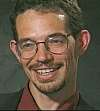Evidence for InflationThe standard big bang theory provides a successful account of the broad features of the Universe we observe. Built on the equations of general relativity, and nuclear and particle physics, which have been independently checked in many ways, it has three main successes. The first is a relation between the density and expansion rate of the Universe and the large scale spatial geometry. Based on the assumption of a hot, smooth, expanding early universe, it successfully predicted the existence and thermal spectrum of the relic cosmic microwave background. The most compelling success is the successful fit to the relative abundances of the five lightest elements with a single free parameter, the primordial baryon-to-photon ratio. In spite of these successes, the theory is clearly incomplete. It does not explain many things about Universe, but merely attributes these to appropriate initial conditions. A striking example is the fact that the temperature of the cosmic microwave background radiation is very nearly identical at antipodal points on the sky. How could this be, when these points can have never communicated with each other - the light emitted from each is after all just reaching us, and we are in between them. So the initial conditions seem to be paradoxical and acausal. Similarly, despite the name, big bang theory does not explain cosmic expansion, it just assumes the initial conditions were rapidly expanding. A more accurate name would be the ‘big after-bang theory’. The density and the expansion rate had to be incredibly uniform, and the geometry very flat to be consistent with the large smooth Universe we see today. Nevertheless the density could not have been exactly uniform. There must have been variations from place to place of the right magnitude (about a part in a hundred thousand) to seed the process of gravitational collapse which formed galaxies, stars and planets. Inflation offers a solution to some of these puzzles. Unlike a cosmological constant, scalar field potential energy can ‘switch itself off’ after a period of exponential expansion, converting its energy into radiation and setting off the standard hot big bang. Thus inflation plays the role of setting up the initial conditions for the hot big bang, in a manner which preserves all the successes of the big bang theory. Scalar fields were originally invoked for very different reasons in elementary particle physics, for the purpose of breaking symmetries and giving particles their mass. But unfortunately these scalar fields do not give interesting amounts of inflation, and special scalar fields have to be invoked, with potential energy functions which are picked in an ad hoc manner. Because of this inflationary models can at present only be viewed as a provisional. The case for inflation nevertheless became much more convincing when it
was realized that it automatically had a very beautiful (and originally
unanticipated) side-effect, of producing density inhomogeneities The primordial inhomogeneities are now being accurately probed by
measurements of the cosmic microwave sky, providing us with detailed tests of
inflationary models. In spite of these major successes, inflation remains somewhat in a state of limbo because no convincing candidate for the needed scalar field has emerged. In fact, the most mathematically complete theories we have, string theory and supergravity, do not seem to yield fields with potential energy functions of the form needed without substantial special pleading.
Contributed by: Dr. Neil Turok |
|
Source: Neil Turok Related Media:
Other Resources:
|




